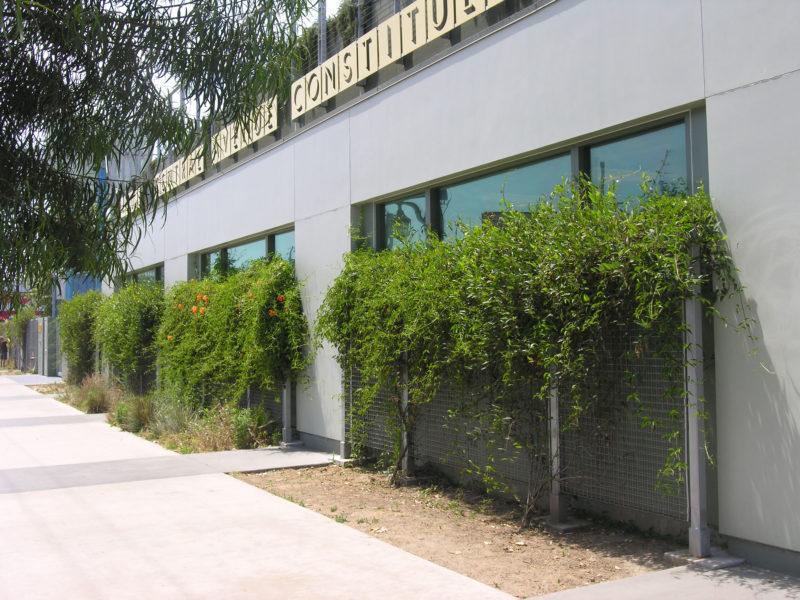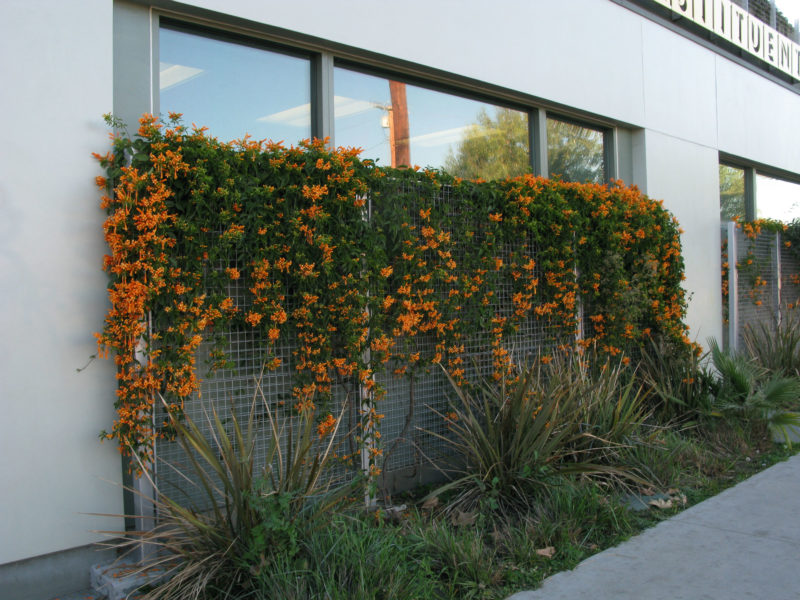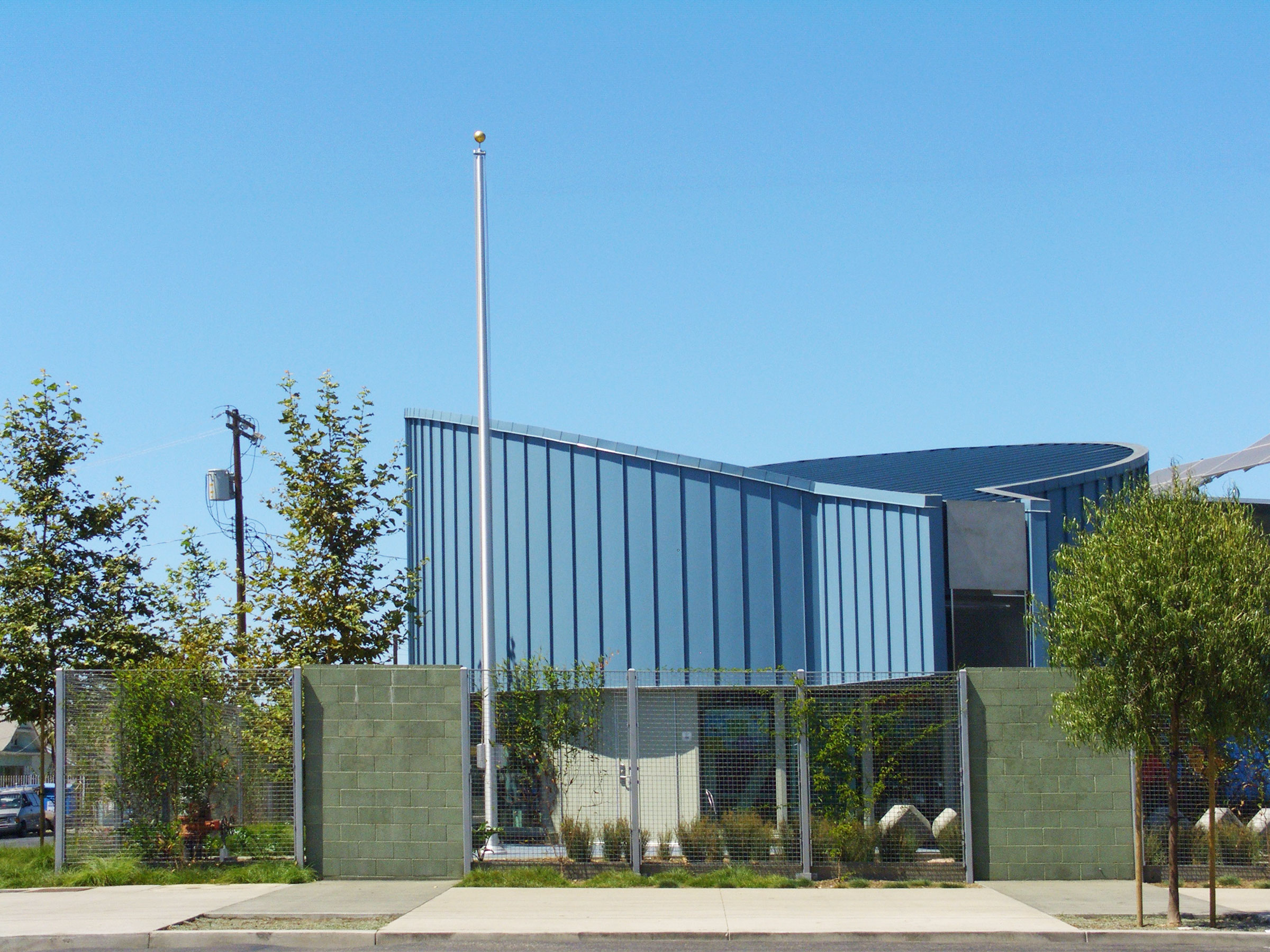Sustainability is front and center in the design and construction of the green facade at Council District 9 headquarters on historic Central Avenue, just south of downtown LA. South Los Angeles is an urban redevelopment zone that is embracing its historic jazz heritage and moving forward with an aggressive streetscape program.
Former District 9 Councilwoman Jan Perry has been a proponent of implementing sustainability initiatives and is widely credited with implementing the Augustus Hawkins Wetland, which is the nation’s first human-made wetland in a highly urban area and is part of Augustus Hawkins Park.
The $10 million project provides forward-looking environmental features that enhance building performance, demonstrate urban development innovations to the public, and form a context for expressing design compositions that echo the community’s jazz history.
Architectural Details

Photo courtesy of greenscreen
The project’s 10,000 square feet include administrative field offices for both the council and various city departments as well as a community meeting room. Below a landscaped entrance, eight raised photovoltaic arrays move during the day to track the sun. The photovoltaic arrays also shade the space below and offer an example of solar power to the public.
To further announce its environmental significance, the design establishes a grid of trees and paving patterns extending throughout the site to give a park-like feeling to the project.
Greenscreen vine trellis panels frame the front of the offices that pay tribute to the historic “taxpayer unit” developments along Central Avenue. Clerestory windows provide natural lighting to the interior while minimizing security concerns for building openings. The design also features a roof garden to serve the community’s environmental and social needs. The project is USGBC LEED Silver.
A Green Community Project

Photo courtesy of greenscreen
Council District 9 offers a unique example of green infrastructure in the highly urban area of South LA. The 3.7-acre site is a great example of sustainable technologies in a new, safe open space. The resulting design incorporates a 7,000-gallon underground cistern, a stormwater collection pond, green walls, parking lot bioswales, drought-tolerant plantings, solar panels, and a large, accessible roof garden designed as a community open space.
The project has been a huge success and has hosted several community events. The site has provided a space for people of all ages to gather at night safely and has reintroduced a bit of nature into the urban environment.
A Green Facade in Action

Photo courtesy of greenscreen
The architect conceived the freestanding green facade at LA Council District 9 to accomplish perimeter security and veiled transparency simultaneously so that users of the community building can both see and be seen. The plant species Hardenbergia provides a balance of privacy and lacy transparency that introduces nature but doesn’t obscure the view.
The green facade design also addresses a local practice of graffiti tagging with spray paint. The vines and trellis structures offer no flat surface for graffiti and discourage defacement.
The use of greenscreen green facade panels in an urban setting provides attractive, cost-effective perimeter security due to its 2×2 grid. To provide design continuity and increased security, greenscreen panels are infilled into the entry and parking lot gating. The design flexibility of greenscreen products allows for a variety of applications that provide design solutions for the challenges that are typical of an urban municipal-use building.


